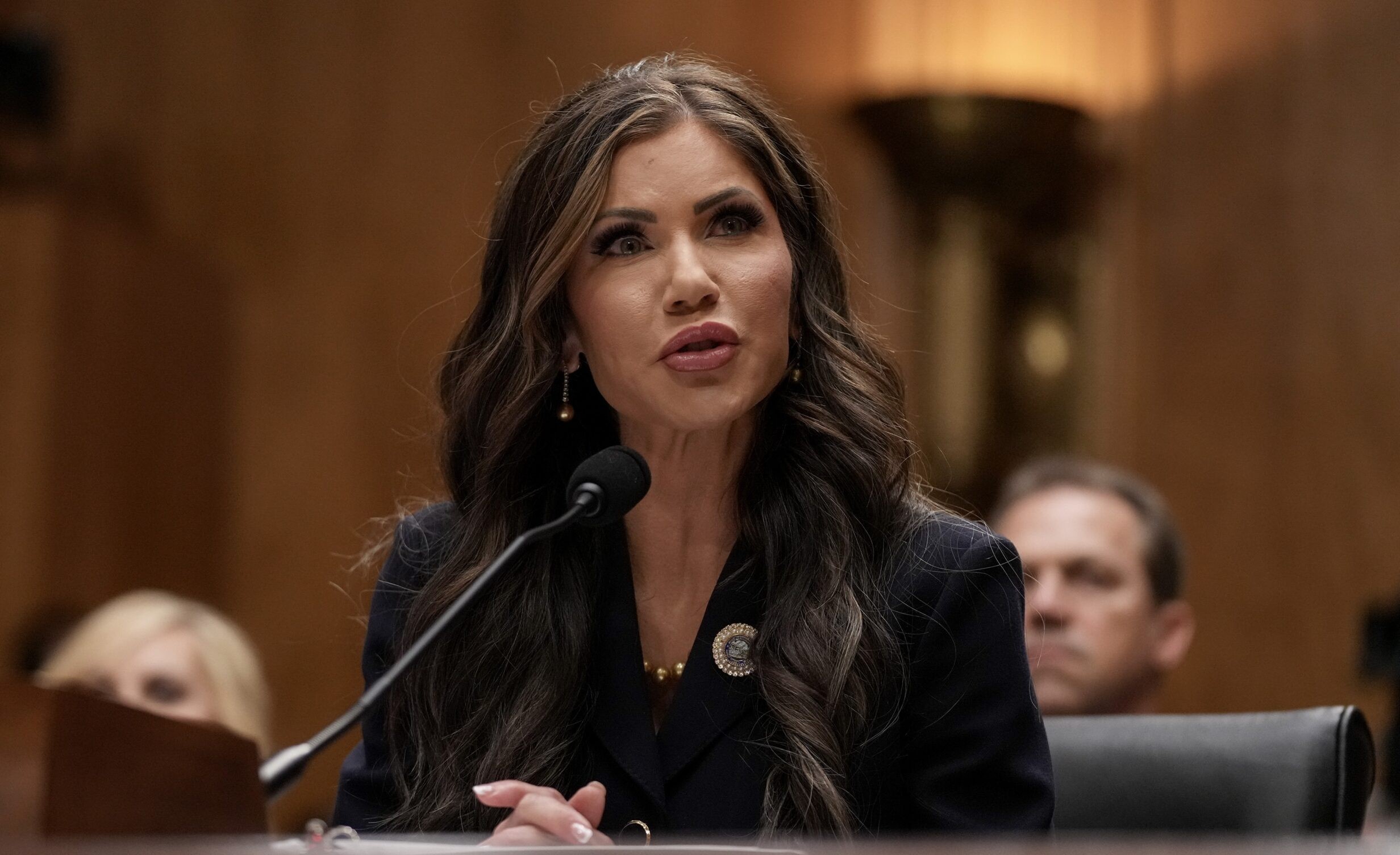The Federal Emergency Management Agency has unveiled a significant new funding program that represents a major shift in federal immigration policy. The initiative, totaling over $608 million, marks a substantial investment in state-level infrastructure designed to address growing pressures on America’s immigration system during a period of unprecedented enforcement activity.
The Detention Support Grant Program Explained
The Federal Emergency Management Agency is preparing to send $608 million to states to construct immigrant detention centers as part of the Trump administration’s push to expand capacity to hold migrants, creating what officials describe as the “Detention Support Grant Program.” This comprehensive initiative represents one of the largest federal investments in state-operated immigration infrastructure in recent history.
The program addresses a critical bottleneck in the nation’s immigration enforcement apparatus. For years, federal facilities operated by U.S. Customs and Border Protection have struggled with severe overcrowding, creating operational challenges that have hampered the government’s ability to process detained individuals efficiently. The new grant system aims to create a network of state-operated facilities that can serve as temporary holding locations before individuals are transferred to permanent Immigration and Customs Enforcement custody.
According to FEMA documentation released through federal channels, the program is specifically designed to help states and local governments expand their detention capacity during what the Trump administration has characterized as an intensified period of immigration enforcement. The grants will cover a broad range of costs associated with establishing and operating detention facilities, including construction, staffing, security, and basic operational expenses.
The funding structure allows for significant flexibility in how states implement their programs. States have until August 8 to apply for the funds, according to the post, giving state governments a narrow window to develop comprehensive proposals for how they would utilize the federal funding. The application process requires states to demonstrate their capacity to manage detention facilities safely and effectively while meeting federal standards for the treatment of detained individuals.
Strategic Context and Federal Policy Alignment
This initiative emerges within the broader context of what President Donald Trump has described as the “largest mass deportation operation of illegal aliens in history.” The administration has made clear its intention to dedicate unprecedented resources to immigration enforcement, and the FEMA grant program represents a crucial component of this strategy.
The program reflects a fundamental shift in how the federal government approaches immigration detention. Rather than relying solely on federal facilities or private contractors, the new model creates partnerships with state governments, allowing for more distributed capacity and potentially faster processing of detained individuals. This approach also aligns with the administration’s broader philosophy of empowering state governments to take more active roles in addressing national challenges.
From an operational perspective, the program addresses several critical needs within the immigration enforcement system. Federal holding facilities have long been criticized for overcrowding, which creates unsafe conditions and hampers the government’s ability to process cases efficiently. By creating additional capacity at the state level, the program aims to reduce pressure on federal facilities while ensuring that detained individuals can be processed more quickly.
Florida’s Alligator Alcatraz: A Case Study in Implementation
The most prominent example of how states are implementing expanded detention capacity is Florida’s controversial Alligator Alcatraz facility, located in the Everglades. This facility has become a model for other states considering similar projects and demonstrates both the potential and the challenges associated with state-operated immigration detention.
Governor Ron DeSantis announced that Florida plans to seek FEMA reimbursement for the construction and operation of the facility, which has the capacity to detain up to 3,000 individuals. The facility’s location at the Dade-Collier Training and Transition Airport provides significant operational advantages, including the ability to conduct deportation flights directly from the site.
The first deportation flights from the facility began operating earlier this year, with each flight carrying approximately 100 individuals to various destination countries. Governor DeSantis reported that “hundreds of illegals have been removed from here,” emphasizing the facility’s operational capacity and its strategic importance in the state’s immigration enforcement efforts.
The facility’s design and location have generated significant controversy. Environmental groups have raised concerns about its proximity to the Everglades, one of America’s most sensitive ecosystems. Local officials in Collier County have also expressed reservations about the fast-tracked construction process and its potential impacts on the surrounding area.
However, Governor DeSantis has dismissed these concerns, arguing that the facility poses no environmental threat since it operates within an existing airport footprint. “This is an existing airport. It’s an existing concrete. They’re not doing anything outside of a footprint they show, and they have a lot of great plans for how to handle everything that happens,” DeSantis explained during a recent event in Marco Island.
The facility’s operational capabilities extend beyond simple detention. The airport infrastructure allows for both day and nighttime operations, providing flexibility in scheduling deportation flights and managing the flow of individuals through the system. This operational efficiency has made the facility attractive to other states considering similar projects.
National Expansion and Interstate Cooperation
The success of Florida’s model has attracted attention from other state governments seeking to expand their own immigration enforcement capabilities. The Trump administration is offering $608 million to states willing to expand migrant detention efforts, and several Republican-led states have expressed interest in developing facilities similar to Alligator Alcatraz.
Homeland Security Secretary Kristi Noem revealed that her department is actively engaged in discussions with five Republican-led states about constructing detention centers modeled after the Florida facility. “We’ve had several other states that are actually using Alligator Alcatraz as a model for how they can partner with us as well,” Noem told reporters, though she declined to identify which specific states are involved in these discussions.
This interstate cooperation represents a significant shift in immigration policy implementation. Traditionally, immigration enforcement has been primarily a federal responsibility, with limited state involvement beyond cooperation with federal agencies. The new model creates a more collaborative approach, with states taking on expanded roles in both detention and deportation operations.
The financial incentives provided through the FEMA grant program make this cooperation attractive to state governments. The federal funding covers not only construction costs but also ongoing operational expenses, reducing the financial burden on state budgets while allowing states to contribute to national immigration enforcement efforts.
Implementation Challenges and Operational Considerations
Despite the significant federal funding available, states face numerous challenges in implementing effective detention programs. The construction and operation of immigration detention facilities require specialized expertise in areas ranging from security and medical care to legal compliance and international coordination for deportation flights.
States must also navigate complex federal regulations governing the treatment of detained individuals. These regulations cover everything from living conditions and medical care to legal representation and communication with family members. Ensuring compliance with these standards requires significant investment in staff training and facility management systems.
The timeline for implementation presents additional challenges. With application deadlines in early August, states have limited time to develop comprehensive proposals and begin construction projects. The pressure to move quickly while maintaining high standards for facility design and operation creates significant logistical challenges for state governments.
Local community relations also present important considerations for states implementing detention facilities. The Florida experience demonstrates that local opposition can emerge around issues including environmental impact, community safety, and economic effects. States must develop strategies for addressing these concerns while maintaining public support for their programs.
Broader Policy Context and Future Implications
The FEMA grant program operates within a broader context of significant changes to federal disaster response and emergency management policy. President Donald Trump said Tuesday that he plans to phase out the Federal Emergency Management Agency after this year’s hurricane season, with major changes to FEMA would come after the Atlantic hurricane season ends in November.
This potential restructuring of FEMA raises important questions about the long-term sustainability of the detention grant program. “We want to wean off of FEMA, and we want to bring it down to the state level”, Trump explained during a June Oval Office meeting, suggesting that responsibility for both disaster response and immigration-related programs may be shifted to state governments.
The timing of these policy changes creates both opportunities and uncertainties for states participating in the detention grant program. While the immediate funding provides resources for facility construction and initial operations, states may need to assume greater long-term financial responsibility for maintaining these facilities if federal support is reduced or eliminated.
This shift aligns with broader administration goals of reducing federal government involvement in areas traditionally handled by Washington while empowering state governments to take more active roles in addressing national challenges. The approach represents a significant departure from previous federal immigration policy, which relied primarily on federal facilities and contractors.
Economic and Social Impact Analysis
The economic implications of the detention grant program extend beyond the direct costs of facility construction and operation. States receiving funding will likely see job creation in construction, security, healthcare, and administrative sectors related to facility operations. These economic benefits may be particularly significant in rural areas where many detention facilities are likely to be located.
However, the program also raises questions about resource allocation and opportunity costs. The substantial federal investment in detention infrastructure represents funds that could potentially be directed toward other priorities, including traditional disaster preparedness, infrastructure development, or social services.
The social impact of expanded detention capacity remains a subject of significant debate. Supporters argue that increased capacity will lead to more efficient processing of immigration cases and reduced overcrowding in existing facilities, potentially improving conditions for detained individuals. Critics contend that expanded detention capacity may lead to increased enforcement activities and longer periods of detention for individuals awaiting immigration proceedings.
Community impact varies significantly depending on facility location and design. Rural communities may welcome the economic benefits associated with facility construction and operation, while urban areas may be more concerned about potential impacts on local services and community relations.
Looking Forward: Implementation Timeline and Future Developments
As states work to meet the August 8 application deadline, the coming months will be crucial in determining how effectively the program can be implemented. States must balance the need for rapid deployment with requirements for thoughtful planning and community engagement.
The program’s success will likely depend on several key factors, including the quality of state applications, the effectiveness of federal oversight and support, and the ability of states to manage complex operational challenges. Early implementation experiences in states like Florida will provide valuable lessons for other participants in the program.
The potential restructuring of FEMA adds an additional layer of complexity to long-term planning. States must consider how changes to federal emergency management policy might affect ongoing support for detention facilities and related programs.
As the program moves forward, its impact on immigration enforcement effectiveness, community relations, and federal-state cooperation will provide important indicators of its long-term viability and potential for expansion to additional policy areas.
The FEMA Detention Support Grant Program represents a significant evolution in American immigration policy, creating new partnerships between federal and state governments while addressing critical capacity constraints in the immigration enforcement system. Its implementation will be closely watched by policymakers, advocacy groups, and communities across the nation as a test case for innovative approaches to complex national challenges.

Adrian Hawthorne is a celebrated author and dedicated archivist who finds inspiration in the hidden stories of the past. Educated at Oxford, he now works at the National Archives, where preserving history fuels his evocative writing. Balancing archival precision with creative storytelling, Adrian founded the Hawthorne Institute of Literary Arts to mentor emerging writers and honor the timeless art of narrative.
